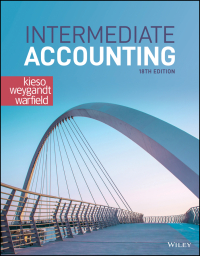Question
P13-2A The comparative statements of Lucille Company are presented here. LUCILLE COMPANY Income Statements For the Years Ended December 31 2012 2011 Net sales $1,890,540
P13-2A The comparative statements of Lucille Company are presented here.
LUCILLE COMPANY
Income Statements
For the Years Ended December 31
2012 2011
Net sales $1,890,540 $1,750,500
Cost of goods sold 1,058,540 1,006,000
Gross profit 832,000 744,500
Selling and administrative expenses 500,000 479,000
Income from operations 332,000 265,500
Other expenses and losses
Interest expense 22,000 20,000
Income before income taxes 310,000 245,500
Income tax expense 92,000 73,000
Net income $ 218,000 $ 172,500
LUCILLE COMPANY
Balance Sheets
December 31
Assets 2012 2011
Current assets
Cash $ 60,100 $ 64,200
Short-term investments 74,000 50,000
Accounts receivable 117,800 102,800
Inventory 126,000 115,500
Total current assets 377,900 332,500
Plant assets (net) 649,000 520,300
Total assets $1,026,900 $852,800
Liabilities and Stockholders Equity
Current liabilities
Accounts payable $ 160,000 $145,400
Income taxes payable 43,500 42,000
Total current liabilities 203,500 187,400
Bonds payable 220,000 200,000
Total liabilities 423,500 387,400
Stockholders equity
Common stock ($5 par) 290,000 300,000
Retained earnings 313,400 165,400
Total stockholders equity 603,400 465,400
Total liabilities and stockholders equity $1,026,900 $852,800
All sales were on account. Net cash provided by operating activities for 2012 was $220,000.
Capital expenditures were $136,000, and cash dividends were $70,000.
Instructions
Compute the following ratios for 2012.
(a) Earnings per share. (h) Days in inventory.
(b) Return on common stockholders equity. (i) Times interest earned.
(c) Return on assets. (j) Asset turnover.
(d) Current ratio. (k) Debt to total assets.
(e) Receivables turnover. (l) Current cash debt coverage.
(f ) Average collection period. (m) Cash debt coverage.
(g) Inventory turnover. (n) Free cash flow
Step by Step Solution
There are 3 Steps involved in it
Step: 1

Get Instant Access to Expert-Tailored Solutions
See step-by-step solutions with expert insights and AI powered tools for academic success
Step: 2

Step: 3

Ace Your Homework with AI
Get the answers you need in no time with our AI-driven, step-by-step assistance
Get Started


